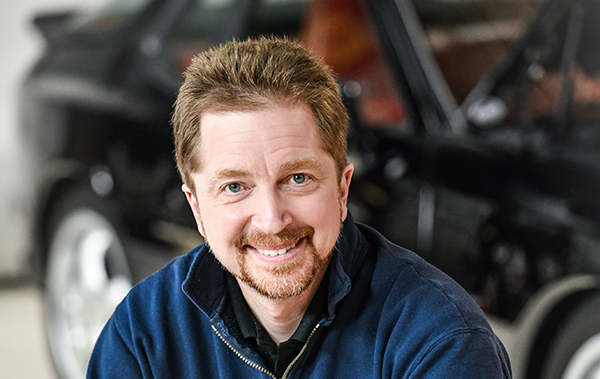For Porsche enthusiasts, precision engineering and thrilling performance are at the heart of the brand. The Porsche Doppelkupplungsgetriebe (DKG), which translates to “double-clutch transmission” and is more commonly known as PDK, perfectly embodies this philosophy. This blog post dives into what a PDK is, how PDK works, potential problems, and how to get the most out of this advanced gearbox.
What is Porsche PDK?
PDK stands for Porsche Doppelkupplungsgetriebe, a dual-clutch transmission that offers the responsiveness of a manual transmission with the convenience of an automatic. Unlike traditional automatics that rely on a single clutch and torque converter, PDK uses two clutches. One clutch is engaged for even gears (2, 4, 6), while the other pre-selects the next odd gear (1, 3, 5, 7). This allows for lightning-fast gear changes, minimizing power loss and maximizing performance.
How Does a PDK Transmission Work?
PDK’s magic lies in its two clutches. One clutch is pre-engaged with the next gear in line, while the other is engaged with the current gear. When you shift gears, the disengaged clutch takes over seamlessly, minimizing power interruption and enabling lightning-fast gear changes.
This technology provides several advantages:
- Pre-selection: The computer constantly analyzes driving conditions and pre-selects the optimal gear with the inactive clutch.
- Gear Change: When you initiate a gear change (either automatically or via paddle shifters), the inactive clutch rapidly engages, while the previously engaged clutch disengages. This near-instantaneous swap minimizes any interruption in power delivery.
- Continuous Power: The seamless clutch handover ensures minimal torque loss, resulting in smooth and rapid acceleration.
PDK is a popular choice for various Porsche models, including the iconic 911, the high-performance GT3, the versatile Macan SUV, the Cayman and 718, and the Boxster.
Is Porsche PDK an automatic transmission?
While PDK offers an automatic mode, it also features paddle shifters for a more manual-like driving experience. This versatility makes PDK appealing to a wider range of drivers, from those who value comfort to those who crave precision and control.
Porsche PDK Problems
While PDK boasts numerous advantages, it’s not without potential problems. Here are some common issues to be aware of:
- Shuddering during shifts: This can be caused by a worn clutch, low transmission fluid, or faulty mechatronic unit (the PDK’s electronic control system).
- Hard shifting: Similar to shuddering, this could indicate low fluid, clutch issues, or a problem with the mechatronic unit.
- Complete transmission failure: Though less common, complete PDK failure can occur, especially in high-mileage vehicles or those subjected to excessive stress.
It’s important to note that these problems are not exclusive to PDK and can occur in other dual-clutch transmissions.
PDK Failure Symptoms
If you experience any of the following symptoms, it’s crucial to have your PDK inspected by a qualified Porsche technician:
- Grinding noises during gear changes
- Hesitation or jerking during shifts
- Warning lights on the dashboard related to the transmission
- A burning smell coming from the transmission area
- Complete loss of power or inability to shift gears
Porsche PDK Reliability
Generally, Porsche PDK transmissions are considered reliable, especially when properly maintained. However, some early model PDKs experienced higher failure rates. If you’re considering a pre-owned Porsche with PDK, it’s wise to have a qualified mechanic such as Seacoast Specialist Cars inspect the vehicle’ service history and check for any known PDK issues specific to that model year.
Porsche PDK Lifespan
With proper care, a Porsche PDK transmission can last for well over 100,000 miles. Regular servicing, including fluid changes and software updates according to Porsche’s recommended intervals, is key to achieving this longevity.
Tips for How to Drive a PDK Transmission
To get the most out of your PDK and extend its lifespan, here are some helpful tips:
- Avoid launching from a stop: This puts excessive stress on the clutch.
- Minimize low-speed crawling: PDK is not designed for constant stop-and-go traffic. If you encounter frequent traffic jams, consider switching to manual mode for better control.
- Don’t rest your foot on the brake pedal while stopped: This can cause unnecessary wear on the clutch.
- Let the transmission cool down after hard driving: Give the PDK a few minutes to cool before parking, especially after track sessions.
Servicing a PDK Transmission
Regular servicing is vital for maintaining the health of your PDK transmission. Here’s what to expect:
- Transmission fluid change: Porsche recommends changing the PDK fluid every 40,000 miles or 4 years, whichever comes first.
- Mechatronic unit maintenance: The mechatronic unit might require occasional cleaning or software updates.
- Clutch replacement: Over time, clutches wear out and will need to be replaced.
Southern New Hampshire PDK Repair
Seacoast Specialist Cars is your trusted independent Porsche specialist in Southern New Hampshire. Our team of factory-trained technicians possess the expertise to diagnose and service your PDK transmission effectively. We use genuine Porsche parts and the latest diagnostic tools to ensure your Porsche performs at its peak. Schedule your service appointment and let our team of experts keep your car running smoothly for years to come.





